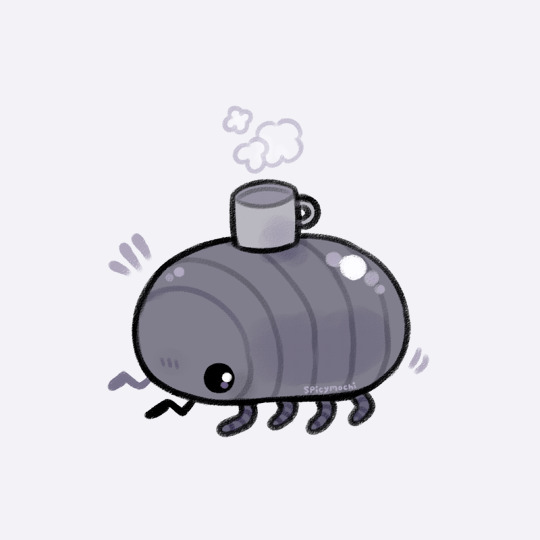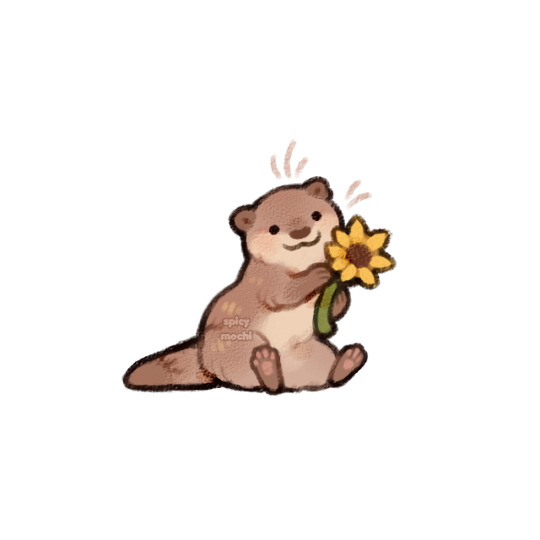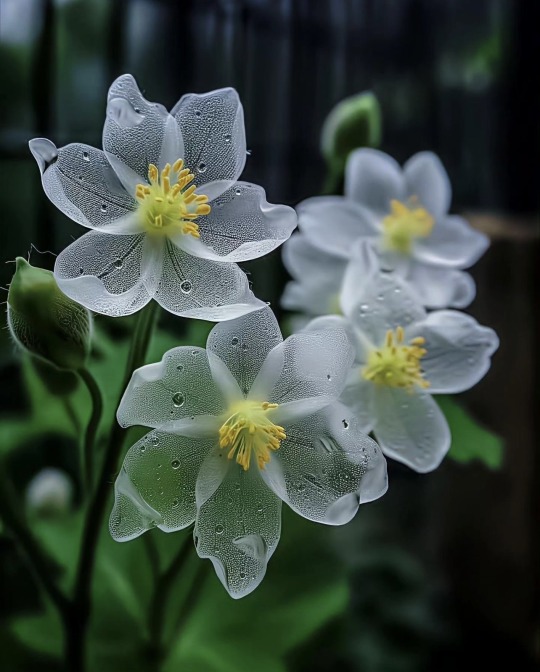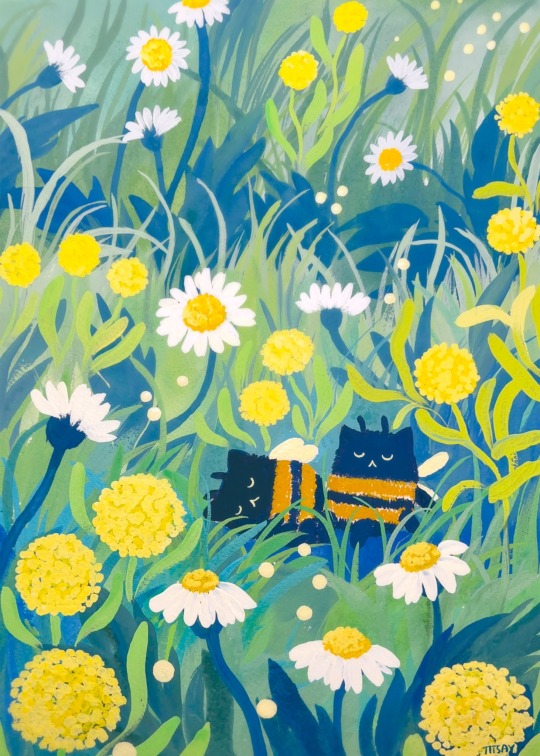Text
God save me from HOA people. Especially those that apply their ideas to plants.
55 notes
·
View notes
Text

Teddy laid out flat to get as close as he could to this bright amanita muscaria. Having just popped its little head out from the duff below it was still in a round ball and had yet to flatten out. The swirls of a fallen pine cone nearby almost captured his attention but the bright red of this mushroom stole the show.
218 notes
·
View notes
Photo

Teddy leaned over as far as he could to get closer to this Protea that was reminiscent of a perfect sunset at the Royal Botanical Gardens.
227 notes
·
View notes
Photo


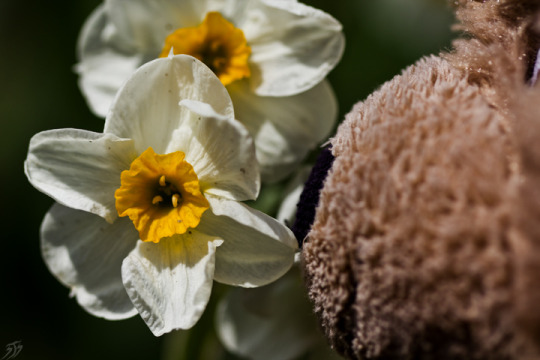
Teddy sniffed some daffodils, though he found he was not alone, a spider found their location first.
251 notes
·
View notes
Text

A growing adventure 🚃
Finally time to reveal the full piece I made for the ”Growth” Art book! The book is still available to buy and is filled with amazing artworks from a bunch of artists 💛
You can buy the art book here:
Citrus Sapling's Shop
Etsy
272 notes
·
View notes
Text
If you don't want weeds, because they tend to overgrow your plants, or you have to follow certain regulations, I highly recommend to look up companion planting.
Certain plants grow even better with certain companion plants. You can even do it in ornamental gardening. Low growing ground covers like sedum are often an option that doesn't really require extra watering or work, but provides a bit of protection from driught and erosion.
But if you can, grow weeds! They don't need extra care, they are for free, they are great for insects and I love them.
I think i am earnestly pro-weeds. gardens should have some weeds in them.
I talked about this in a recent post, but people try to keep their flower gardens with a bunch of just...open space between their plants. They want it to look "neat." In nature that just means there's a niche unfilled, and nature tries to fill up empty space as fast as possible. There are certain plants that specialize in it. They're often what we know as "weeds," but their tendency to pop up quickly in empty dirt isn't bad or evil, it's literally just their job.
I've noticed that random plants growing in your flower beds keep the dirt cool and moist and stop it from getting too packed down. Which makes sense, because plants aren't made to grow without other plants around. All of them evolved to occupy niches alongside other plants and to share space.
Also, a word about insect pests: I have further noticed that the Japanese beetles this year are mostly ignoring our vegetable garden, but they're going crazy over the huge mass of Virginia creeper covering our back deck. Maybe one reason for pest problems can be that the bugs don't have much else to eat?
2K notes
·
View notes
Text
In the future, children will think our ways are strange. "Why do old people always grow so much milkweed in their gardens?" they'll say. "Why do old people always write down when the first bees and butterflies show up? Why do old people hate lawn grass so much? Why do old people like to sit outside and watch bees?"
We will try to explain to them that when we were young, most people's yards were almost entirely short grass with barely any flowers at all, and it was so commonplace to spray poisons to kill insects and weeds that it was feared monarch butterflies and American bumblebees would soon go extinct. We will show them pictures of sidewalks, shops, and houses surrounded by empty grass without any flowers or vegetables and they will stare at them like we stared at pictures of grimy children working in coal mines
79K notes
·
View notes
Text
And they are beautiful and
As a society we have done thistles so dirty. Not even pollinator-plant zealots recommend planting thistles even though pollinators go absolutely crazy over them.
I saw 2 (two) Great Spangled Fritillaries trying to cram themselves onto the same thistle flower today as well as a thistle plant with multiple American Bumblebees on it. These things are a monarch magnet too.
I know what I'm gonna be gathering seeds from

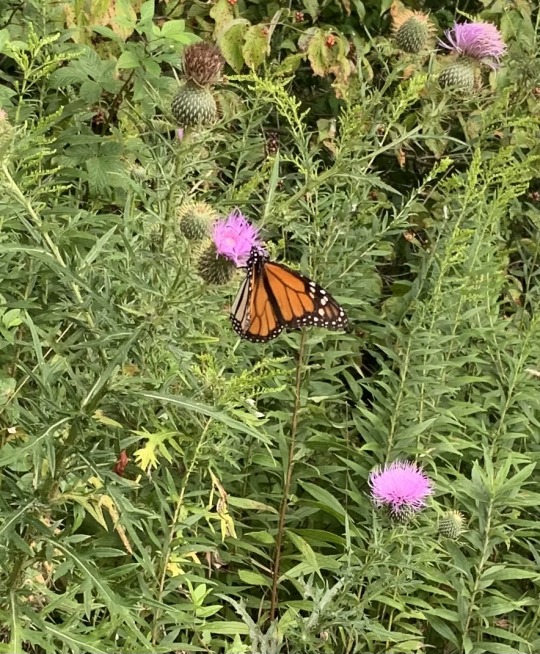
1K notes
·
View notes
Text
Many people, especially USAmericans, are very resistant to knowing the plants and living according to the ways of the plants. They lash out with a mix of arrogance and fear: "Don't you know what bad things would happen if we lived a different way? There is a REASON for living this way. Would you have us go Back—backward to the time without vaccines or antibiotics????"
Ah, yes, the two immutable categories that all proposals for change fit into: Backward Change and Forward Change! Either we must invent a a futuristic, entirely new solution with SCIENCE and TECHNOLOGY that further industrializes and increases the productivity of our world, or we must give up vaccines and antibiotics and become starving illiterate medieval peasants.
Every human practice anywhere on Earth that has declined, stopped, or become displaced by another practice, was clearly objectively worse than whatever replaced it. You see, the only possible reason a way of life could decline or disappear is that it sucked and had it coming anyway!!! Pre-industrial human history is worthless except as a cautionary tale about how miserable we would all be without *checks notes* factories, fossil fuels and colonialism. Obviously!
Anyway, who do you think benefits from the idea that pesticide-dependent, corporate-controlled industrialized monoculture farming liberates us all from spending our short, painful lives as filthy, miserable peasants toiling in the fields?
First of all, I think it's silly to act like farming is a uniquely awful way to live. I can't believe I have to say this, but the awful part of being a medieval peasant was the oppression and poverty, not the fact that harvesting wheat is a lot of work and cows are stinky. Same goes for farm labor in the modern USA: the bad part is that most people working farms are undocumented migrant workers that are getting treated like garbage and who can't complain about it because their boss will rat them out to ICE.
Work is just work. Any work has dignity when the people doing it are paid properly and not being abused. Abuse and human trafficking is rampant in agriculture, but industrialization and consolidation of small farms into gigantic corporate owned farms sure as hell isn't making it better.
Is working on a farm somehow more miserable than working in a factory, a fast food restaurant, or a retail store? Give me a break. "At least I'm not doing physical labor in the sun," you say, at your job where you're forced to stand on concrete for 8 hours and develop chronic pain by age 24.
When you read about small farmers going out of business because of huge corporations, none of them are going "Yay! Now that Giant Corporation has swallowed up all the farms in the area, we can all enjoy the luxurious privileges of the industrial era, like working RETAIL!" What you do see a lot of is farmers bitterly grieving the loss of their way of life.
And also, the fact is, sustainable forms of polyculture farming that create a functional ecosystem made up of many different useful and edible plants are actually way MORE efficient at producing food than a monoculture. The reason we don't do it as much, is that it can't be industrialized where everything is harvested with machines.
Some places folks are starting to get the idea and planting two crops together in alternating rows, letting the mutualistic relationship between plants boost the yields of both, but indigenous people in many parts of the world have been doing this stuff basically forever. I read about a style of agroforestry from Central America that has TWENTY crops all together on the same field.
Our modern system of farming is necessary for feeding the world? Bullshit! Our technology is very powerful and useful, but our harmful monocultures, dangerous pesticides, and wasteful usage of land and resources are making the system very inefficient and severely degrading nature's ability to provide for us.
What is needed, is a SYNTHESIS of the power and insights of technology and science, with the ancient wisdom and knowledge gained by closely and carefully observing Nature. We do not need to reject one, to embrace the other! They should be friends!
Our system thinks land is only used for one thing at a time. Even our science often thinks this way. A corn field has the purpose of producing corn, and no other purpose, so all other plants in the corn must be killed, and it must be a monoculture of only corn.
But this means that the symbiosis between different plants that help each other is destroyed, so we must pollute the earth with fertilizers that wash into bodies of water and cause eutrophication, where algae explode in number and turn the water to green goo. Nature always has variety and diversity with many plants sharing the same space. It supports much more animal life (we are animals!) this way. The Three Sisters" are the perfect example of mutualism between plants being used in an agricultural environment. The planting of corn, beans, and squash together has been traditionally used clear across the North American continent.
And in North America, the weeds we have here are mostly edible plants too. Some of them were even domesticated themselves! Imagine a garden where every weed that pops up is also an edible or otherwise useful crop, and therefore a welcomed friend! So when weeds like Amaranth and Sunflower pop up in your field, that should not be a cause for alarm, but rather the system of symbiosis working as it should.
A field of one single crop is limited in how much it can produce, because one crop fits into a single niche in what should be a whole ecosystem, and worse, it requires artificial inputs to make up for what the rest of the plant community would normally provide. The field with twenty crops does not produce the same amount as the monoculture field divided in twenty ways, but instead produces much more while being a habitat for wild animals, because each plant has its own niche.
2K notes
·
View notes
Text
i'm so sick of being the only person who can make simple connections of how doing a thing to the ecosystem has effects. so so so so sick NO ONE knows the ways of the plants
14K notes
·
View notes
Text
Just so everyone is aware:
An international group of qualified mushroom identifiers who do worldwide identification in emergency cases have identified the Shroomers App as a potentially very dangerous system that could kill you if you try to use it to identify edible mushrooms. They use AI to generate almost all of their content, including their identification profiles on their app as well as their books and other materials. Not only is this unethical from a content creation standpoint, it is also extremely dangerous.
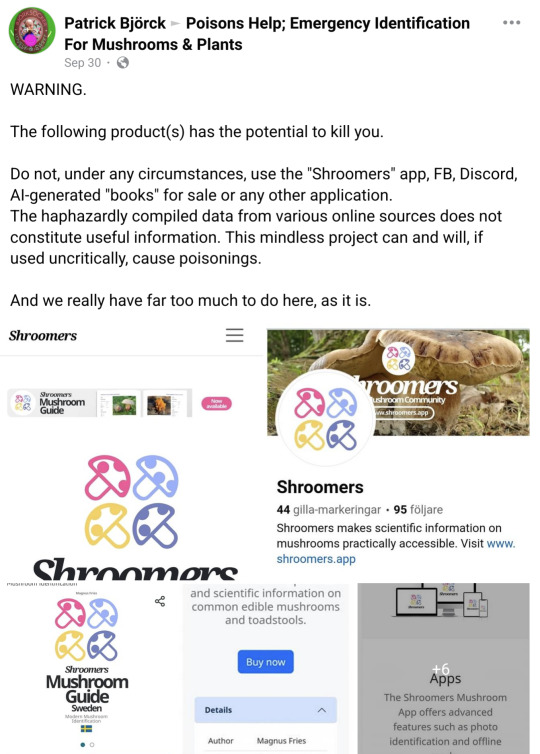
DO NOT USE APPS FOR IDENTIFICATION PURPOSES BEYOND SIMPLE CURIOSITY. A MISTAKE WHEN IDENTIFYING AN EDIBLE COULD COST YOU YOUR LIFE. DO NOT EAT ANY FORAGED MUSHROOM YOU CANNOT IDENTIFY YOURSELF BY SIGHT OR HAS BEEN IDENTIFIED IN PERSON BY SOMEONE WHO CAN.
ONLY BUY BOOKS FROM REPUTABLE SOURCES AND AT THIS POINT THAT MEANS ASKING EXPERIENCED PEOPLE WHAT BOOKS THEY USE.
Mushrooms are fun, amazing organisms. Enjoy safely.
44K notes
·
View notes


